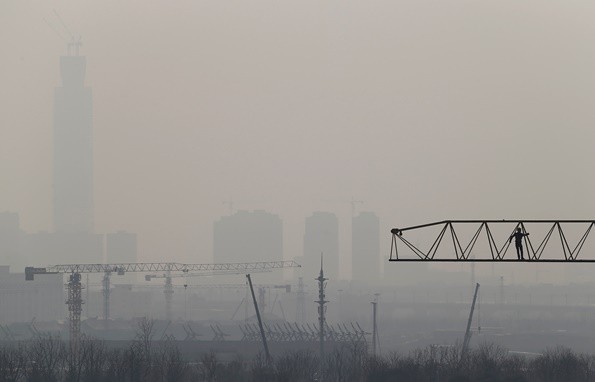The reduction of pollution caused by trucks and ships will be a priority in Shanghai this 2015, an environmental official said on Jan 7, Wednesday.
According to the official, Shanghai has many cargo trucks that brought about a "huge amount of exhaust fumes and dust, and damage air quality."
"Seeking ways to reduce emissions from motor vehicles will continue to be one of our main tasks in 2015," the environmental officer added.
"One of the problems is that Shanghai welcomes vessels from all over the world, but there is no unified standard on emissions. The government needs to decide whether we should follow the practice of international ports or establish our own," he said.
The officer said that "in the past we have overlooked the impact of the emissions from ships coming into and out of harbor, but they are a major source of pollutants."
Luo Hailin, an officer of the Shanghai Environmental Protection Bureau, said that Shanghai has much fewer vehicles compared to Beijing, though the pollution they make is significantly higher.
He added that Shanghai's large volumes of river traffic also contribute to the problems they have to deal with, unlike Beijing and most other Chinese cities.
The vessels that come to Shanghai ports and ships that pass the Yangtze River from or to Anhui and Jiangsu provinces also add to the city's pollution.
One of the measures implemented in 2014 was a deal made by the authorities of Shanghai and the neighboring provinces of Zhejiang, Jiangsu and Anhui. Under the agreement, the different provinces all concurred to share each other's data about air quality, make industrial emission standards and alert each other about threats of pollution. More than 170,000 heavy-polluting and old vehicles were removed from the streets, the bureau mentioned.
The previous year included the steps that updated 1,675 boilers and furnaces that used coal or oil. More than 100 dust detectors at construction sites were also added. Shanghai also banned straw burning earlier last year.
According to a survey from 2013 by the Air Quality Watchdog, large vessel ships produce 12 percent of Shanghai's sulfur oxygen emissions, 11 percent of its nitrogen dioxide emissions, and 5 percent of its PM2.5 particles.
In accordance to official statements, 84 days were classified polluted in the previous year, down from 124 in 2013. Four days were heavily polluted, with an AQI reading of 201 and 300. There were no reported days of severe pollution.
Pledging to deal with vehicle emissions, the bureau stated that there is a room for improvement in cutting pollution made by the industrial setting, mainly in the catering, dry cleaning and vehicle maintenance sectors.
"At present we rely heavily on tip-offs from the public about pollution violations and illegal discharges by factories," Luo said.
"So we are encouraging district and county governments to help us create a more effective and wider reaching network. The battle against air pollution is a long-term one, and while we are encouraged by our successes in 2014, there is also a lot of pressure on us to achieve even more," told Luo.




























